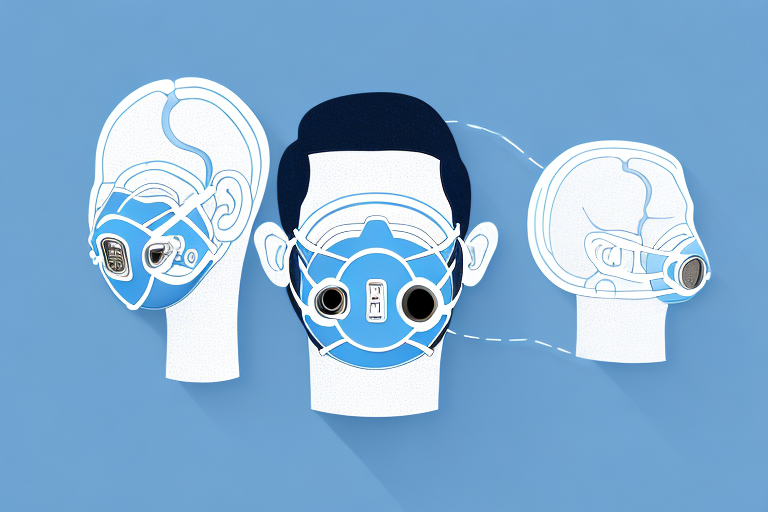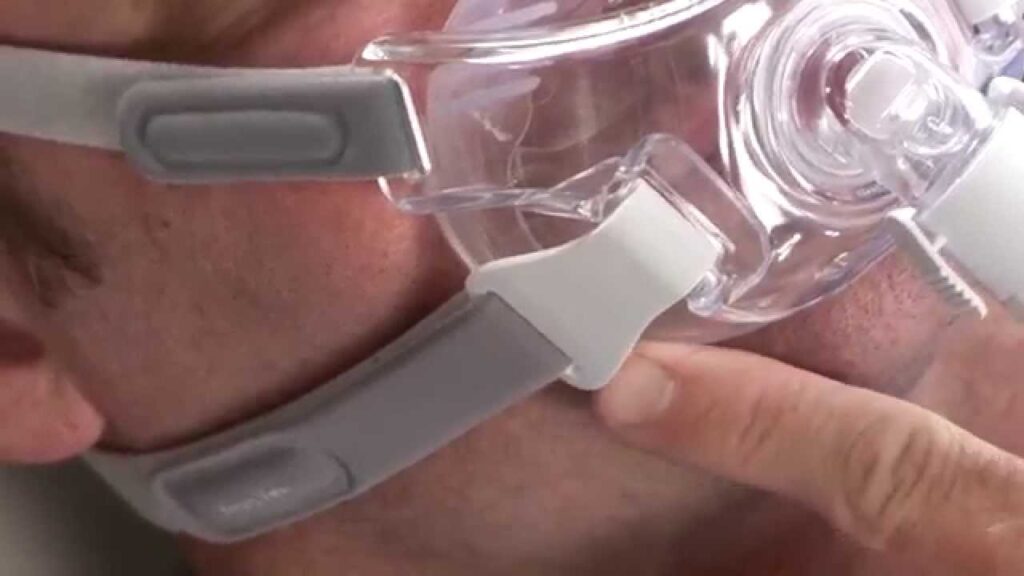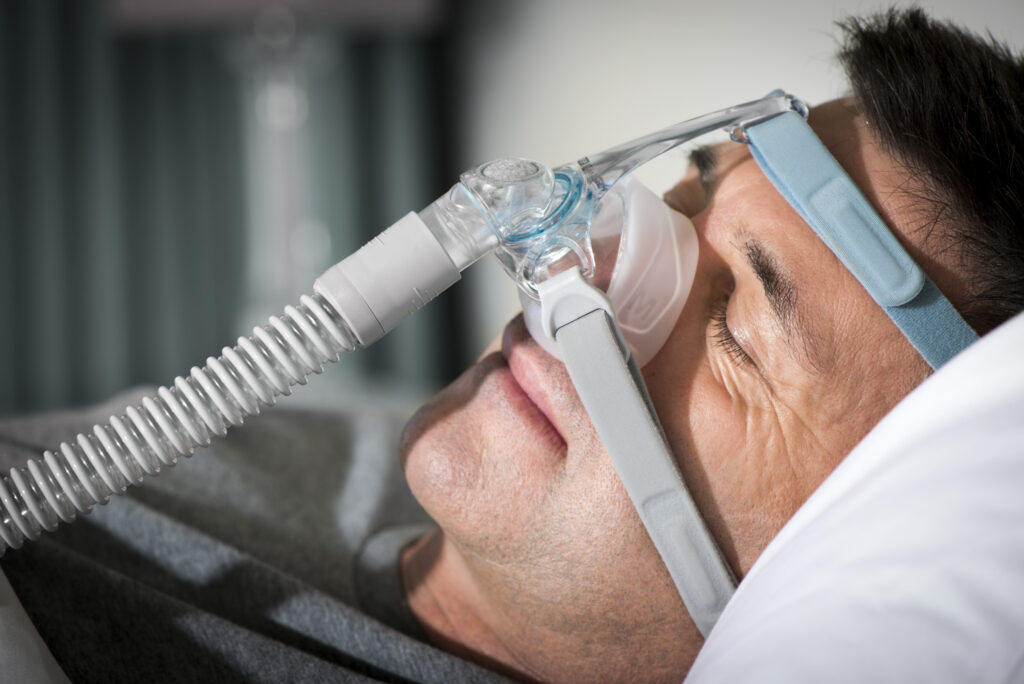Understanding the Importance of a Properly Fitted CPAP Mask
A CPAP mask is an essential component of sleep apnea treatment. It works by delivering pressurized air to keep your airways open and prevent interruptions in breathing during sleep. However, the effectiveness of this therapy greatly depends on the proper fit of the mask.
A well-fitted CPAP mask ensures a secure seal, preventing air leakage and maximizing the delivery of pressurized air. It plays a crucial role in maintaining therapy efficacy and overall comfort. Let’s explore the importance of a properly fitted CPAP mask in detail.
The Role of CPAP Masks in Sleep Apnea Treatment
CPAP masks are designed to deliver pressurized air to your airways, keeping them open and preventing the collapse that causes sleep apnea events. These masks come in various styles, such as nasal masks, full-face masks, and nasal pillows, catering to different user preferences and individual needs.
By ensuring a continuous flow of pressurized air, CPAP masks effectively treat breathing disruptions that commonly occur in sleep apnea patients. This therapy significantly reduces daytime sleepiness, improves cognitive function, and lowers the risk of cardiovascular complications associated with untreated sleep apnea.
Moreover, CPAP masks are equipped with adjustable straps and headgear to provide a customized fit for each user. This allows for optimal comfort and stability during sleep, ensuring that the mask remains in place throughout the night. Learn more about incorporating technology in CPAP masks for enhanced comfort.

How an Ill-Fitted Mask Can Affect Your Therapy
Using an ill-fitted CPAP mask can have several detrimental effects on your sleep apnea therapy. When the mask fails to create a proper seal, it can lead to air leakage, compromising the effectiveness of the therapy. This can result in incomplete treatment and reduced symptom relief.
Furthermore, an ill-fitted mask can cause discomfort, skin irritation, and pressure sores. The constant rubbing and friction between the mask and your skin can lead to redness, soreness, and even open wounds. These issues not only affect your sleep quality but also your overall well-being.
Additionally, an ill-fitted mask can disrupt your sleep by causing frequent awakenings due to air leaks or discomfort. This can lead to fragmented sleep patterns, leaving you feeling tired and fatigued during the day.
It is important to note that each individual has unique facial features and preferences, making it essential to find the right CPAP mask that fits properly. Working closely with a healthcare professional or a CPAP supplier can help you find the right mask size, style, and fit, ensuring optimal therapy outcomes.
In conclusion, a properly fitted CPAP mask is crucial for effective sleep apnea therapy. It not only ensures a secure seal and maximum delivery of pressurized air but also enhances comfort and overall compliance with the treatment. By addressing any fitting issues promptly, you can optimize the benefits of CPAP therapy and improve your sleep quality and overall well-being.
Identifying the Right CPAP Mask for You
Choosing the most suitable CPAP mask is essential for a comfortable and effective therapy experience. Several factors should be considered when selecting a CPAP mask that best fits your needs. Let’s explore these factors in detail.
Different Types of CPAP Masks
CPAP masks come in various styles to cater to different preferences and facial structures. The main types include nasal masks, full-face masks, and nasal pillows. Nasal masks cover the nose, while full-face masks cover both the nose and mouth. Nasal pillows feature small cushions that fit into the nostrils.
When it comes to choosing the right type of mask, it’s important to consider your breathing patterns. If you primarily breathe through your nose, a nasal mask may be the best option for you. However, if you tend to breathe through your mouth during sleep, a full-face mask might be more suitable. Nasal pillows are a good choice for individuals who prefer minimal contact with their face.
Comfort is another important factor to consider. Some people find nasal masks to be more comfortable because they are less intrusive and allow for a wider field of vision. On the other hand, full-face masks provide a secure fit and are ideal for individuals who move around a lot during sleep.
Consulting with a sleep specialist or CPAP supplier can provide valuable guidance in selecting the most suitable mask for your needs. They can help assess your facial structure and breathing patterns to recommend the best type of mask for you.

Factors to Consider When Choosing a CPAP Mask
In addition to the mask type, several factors should be taken into consideration when selecting a CPAP mask. These include your facial shape and size, pressure requirements, mask stability, noise levels, and maintenance requirements. Evaluating these factors can help ensure a comfortable and proper fit.
Your facial shape and size play a crucial role in determining the right mask fit. Some masks come in different sizes to accommodate various face shapes. It’s important to choose a mask that provides a secure seal without causing discomfort or pressure points.
The pressure requirements of your CPAP therapy should also be considered. Certain masks are designed to handle higher pressure levels, while others may be more suitable for lower pressure settings. It’s important to choose a mask that can effectively deliver the prescribed pressure to ensure optimal therapy results.
Mask stability is another important factor to consider. You want a mask that stays in place throughout the night, even if you tend to toss and turn. Look for masks with adjustable headgear and straps to ensure a secure and comfortable fit.
Noise levels can also impact your therapy experience. Some masks are designed with features to minimize noise, such as diffusers or quiet venting systems. If noise is a concern for you, consider masks that prioritize noise reduction.
Maintenance requirements should also be taken into account. Some masks require more frequent cleaning and replacement of parts, while others are more low-maintenance. Consider your lifestyle and preferences when choosing a mask that fits your maintenance routine.
It is recommended to try different mask options before making a final decision. Many suppliers offer mask fitting programs that allow you to test various masks and determine the best fit for your individual requirements. Taking the time to find the right mask can greatly enhance your therapy experience.
Steps to Properly Fit Your CPAP Mask
Properly fitting your CPAP mask is crucial for optimal therapy outcomes. The following steps outline the process of achieving a secure and comfortable fit.
Preparing for Mask Fitting
Before fitting your CPAP mask, ensure that you have thoroughly washed your face to remove any dirt, oils, or residue. This helps promote a better seal and prevents skin irritation. Additionally, make sure that your CPAP machine is properly set up and running.
Have your mask, straps, and headgear ready for the fitting process. It is advisable to read the manufacturer’s instructions and familiarize yourself with the mask components to ensure correct usage.
Adjusting the Mask for a Perfect Fit
Begin by positioning the mask on your face, ensuring it covers the intended areas (nose, mouth, or both) without any gaps. Adjust the headgear straps to achieve a snug yet comfortable fit. It is important to avoid over-tightening, as this can lead to discomfort and mask leakage.
Next, check for air leakage by turning on the CPAP machine and starting the airflow. Observe if any air is escaping around the mask. Make necessary adjustments to the straps and nasal cushions or pillows to achieve a secure seal without excessive pressure.
Take your time to fine-tune the fit, ensuring that the mask is stable and comfortable throughout various sleep positions. It may be necessary to make minor adjustments over time, as the fit can change due to weight fluctuations or mask wear and tear.
Troubleshooting Common CPAP Mask Fit Issues
Despite your best efforts, you may encounter occasional mask fit issues during CPAP therapy. Understanding how to troubleshoot these problems can help enhance your experience and maintain effective treatment.

Dealing with Leaks and Discomfort
A common issue is air leakage around the mask, resulting in noise, reduced therapy effectiveness, and disrupted sleep. To address leaks, start by checking the mask fit and adjusting the headgear straps. Ensure that the mask is not too tight or too loose for proper sealing.
If leaks persist, consider replacing worn-out mask components, such as cushions or pillows, as they may no longer provide an effective seal. Consulting with your CPAP supplier or sleep specialist can provide valuable guidance in resolving persistent leakage issues.
Discomfort can result from excessive pressure exerted by the mask, causing redness, marks, or even pain on the face. Adjusting the headgear straps, cushion or pillow positions, and exploring alternative mask styles may help alleviate discomfort and promote better compliance.
Addressing Skin Irritation and Pressure Sores
Extended mask usage can sometimes lead to skin irritation or pressure sores. To prevent these issues, ensure that your face is clean before wearing the mask, and consider using a hypoallergenic mask cushion or nasal pillow. Regularly inspect the mask for signs of wear or damage that could worsen skin irritation.
If you experience persistent skin irritation or pressure sores, discuss it with your healthcare provider. They may recommend alternative mask materials or provide guidance on skincare practices that can help mitigate these issues.
Maintaining Your CPAP Mask for Optimal Performance
Maintaining your CPAP mask properly is crucial for its longevity, hygiene, and overall performance. Following these guidelines will help ensure continuous comfort and optimal therapy outcomes.
Regular Cleaning and Replacement
It is essential to clean your CPAP mask regularly to eliminate dirt, oils, and bacteria that can accumulate over time. Follow the manufacturer’s guidelines for cleaning procedures and recommended cleaning agents. Replace mask components, such as cushions, headgear, or straps, as instructed to maintain proper fit and functionality.
Regular replacement of mask components is necessary to minimize wear and tear and ensure an effective seal. Over time, materials may degrade, causing leaks and compromised therapy. Developing a routine for cleaning and replacement will help maintain the performance of your CPAP mask.
Ensuring Continuous Comfort and Effectiveness
Regularly monitor the comfort and fit of your CPAP mask. Periodically reassess your mask fit and adjust the straps or cushion positions as needed. Weight fluctuations or changes in facial structure may require adjustments or even a different mask type to maintain an effective seal.
Additionally, staying consistent with your CPAP therapy and adhering to a regular sleep schedule can contribute to better overall comfort and treatment success. If you experience any persistent issues or changes in therapy effectiveness, consult with your healthcare provider or sleep specialist for further evaluation and guidance.
By understanding the importance of a properly fitted CPAP mask, choosing the right mask for your needs, and following the steps to achieve a secure fit, you can ensure an effective seal and maximize the benefits of your sleep apnea therapy. With proper maintenance and consideration of common mask fit issues, you can enjoy a comfortable and successful journey towards better sleep and improved overall health.

